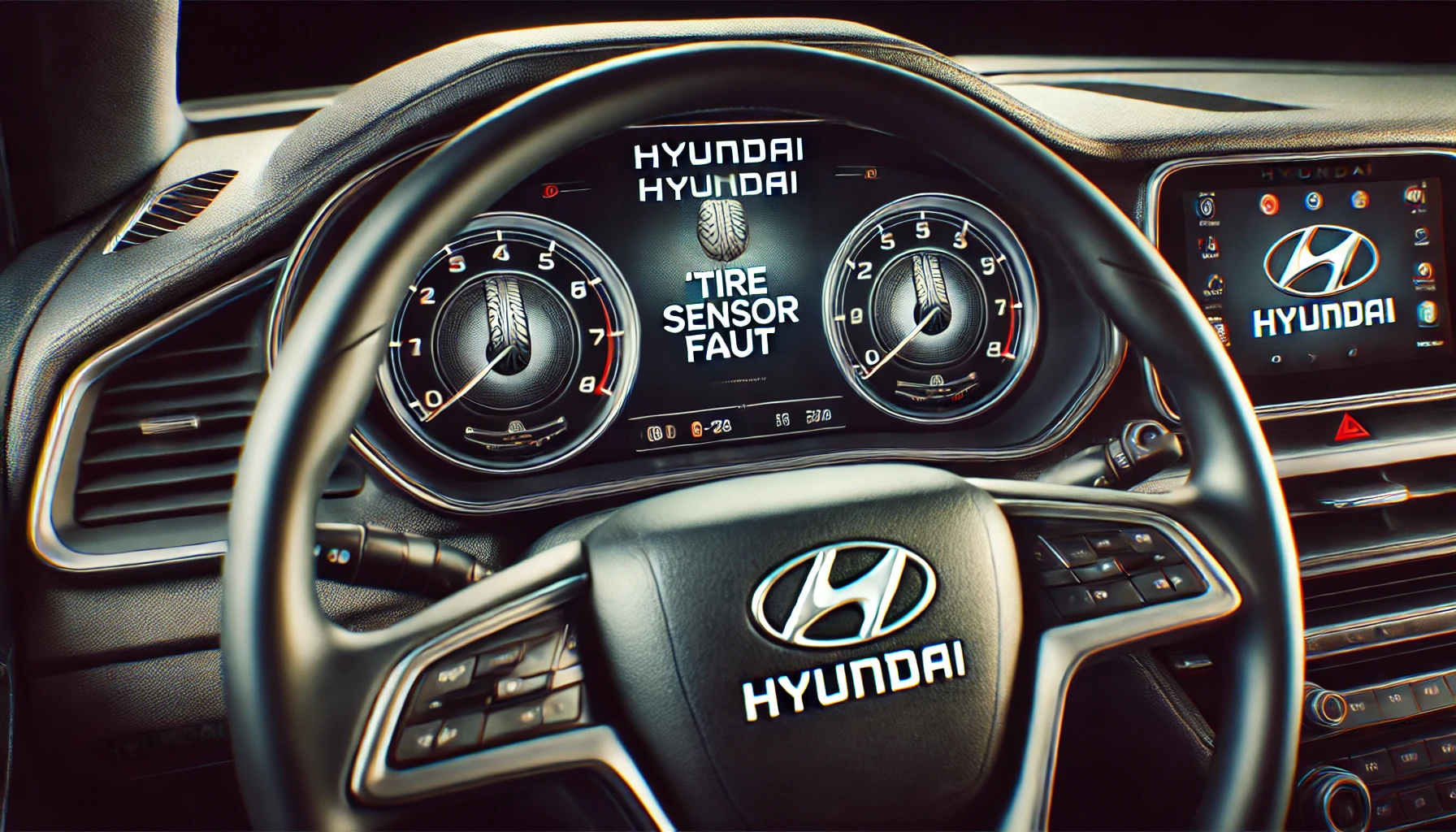
Hyundai vehicles are equipped with a Tire Pressure Monitoring System (TPMS) that helps maintain proper tire pressure by alerting drivers when the pressure in any tire is too low. If the system detects an issue, a “Tire Sensor Fault” warning might appear on the dashboard. This warning can be caused by various factors, such as faulty sensors or incorrect tire pressure. In this guide, we’ll explore common causes of a Tire Sensor Fault in Hyundai vehicles and how you can fix it.
Common Causes of Tire Sensor Fault in Hyundai Vehicles
Here are some of the common reasons why you might see a Tire Sensor Fault warning in your Hyundai:
- Low Tire Pressure: One of the most frequent causes of a tire sensor fault is under-inflated tires. The TPMS system is designed to alert you when the pressure in any tire falls below the recommended level.
- Damaged Tire Sensors: Each tire has a sensor that communicates with the vehicle’s computer. If the sensor is damaged—often due to rough road conditions or improper handling during tire changes—it can trigger a fault.
- Weak Sensor Battery: Tire sensors in Hyundai vehicles are powered by small batteries, which last several years. However, when the battery begins to weaken, the sensor may stop sending accurate data, causing the fault.
- Radio Interference: Occasionally, external electronic interference can disrupt the communication between the tire sensors and the vehicle’s TPMS system, triggering a fault message.
- Software Glitches: A software malfunction in the vehicle’s onboard TPMS system can also cause the tire sensor to misread or fail to communicate, leading to the warning light.
Steps to Fix Tire Sensor Fault in Hyundai Vehicles
If your Hyundai is showing a Tire Sensor Fault warning, here are the steps you can take to diagnose and fix the issue:
1. Check Tire Pressure Manually
The first step is to manually check the tire pressure in all four tires. Use a tire pressure gauge to compare the actual pressure with the recommended pressure, which can be found on a sticker inside the driver’s door or in your vehicle’s owner’s manual.
- If you find that one or more tires are under-inflated, inflate them to the proper level.
- Once you’ve adjusted the tire pressure, drive the vehicle for a few miles to see if the TPMS system recalibrates and the fault warning disappears.
2. Reset the TPMS System
If adjusting the tire pressure doesn’t clear the warning, you may need to reset the TPMS system. In Hyundai vehicles, resetting the system is usually a simple process:
- Turn the ignition to the On position without starting the engine.
- Use the controls on your steering wheel to navigate to the TPMS menu on the instrument cluster.
- Look for an option to Reset TPMS or Relearn Tire Positions, then follow the on-screen instructions.
- After resetting, drive the vehicle at speeds above 25 mph for about 10-15 minutes to allow the system to recalibrate.
If the reset is successful, the Tire Sensor Fault message should disappear.
3. Inspect Tire Sensors for Damage
If the fault persists, it’s possible that one or more tire sensors are damaged. The sensors are located inside the tire, usually attached to the valve stem. Damage to the sensor can occur during tire changes, rotations, or from driving on rough terrain.
- Inspect the valve stems for visible damage.
- If a sensor is damaged, it will need to be replaced. Since sensor replacement requires specialized tools, it’s recommended to visit a Hyundai dealership or a certified mechanic to replace the faulty sensor.
4. Replace the Sensor Battery
The sensors in your Hyundai’s tires are powered by long-lasting batteries. However, over time, the battery can weaken and cause the sensor to stop functioning. Unfortunately, the batteries inside tire sensors are not replaceable on their own, so the entire sensor will need to be replaced if the battery is depleted.
- A Hyundai-certified mechanic can replace the faulty sensor and ensure it’s properly calibrated with the vehicle’s TPMS system.
5. Update the Vehicle’s Software
Sometimes, a Tire Sensor Fault could be caused by a software issue within the vehicle’s onboard system. Hyundai periodically releases software updates that can address bugs or glitches that affect the TPMS. If none of the previous steps work, check with your Hyundai dealership to see if a software update is available for your vehicle.
Preventing Future Tire Sensor Faults
- Regular Tire Pressure Checks: Make it a habit to check your tire pressure at least once a month, especially during seasonal temperature changes. This ensures your tires remain at optimal pressure and helps prevent false TPMS warnings.
- Careful Tire Changes: When getting your tires changed or rotated, be cautious with the sensors. Always ensure that the technician handling your tires is aware of the sensors and takes care to avoid damaging them.
- Routine Maintenance: During regular vehicle maintenance, ask your mechanic to inspect the TPMS sensors to ensure they are in good condition. This proactive step can help identify potential issues before they cause a fault.
- Software Updates: Regularly update your vehicle’s software to prevent any system glitches that could affect the TPMS. Staying current with software updates helps ensure all your vehicle’s systems, including the TPMS, work correctly.
Conclusion
A Tire Sensor Fault in your Hyundai can be frustrating, but with a few simple steps, you can often resolve the issue quickly. Start by checking and adjusting the tire pressure, reset the TPMS system, and inspect the sensors for damage. If the fault persists, consider visiting a Hyundai dealership for a professional diagnosis. Regular maintenance and careful handling of your tire sensors will help ensure they remain in good condition, allowing for safe and efficient driving.
